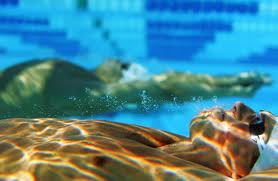Suntans are considered the best part of outdoor swimming. And this is why most people presume that if you want a dark hued skin then sun block should be avoided. Nothing could be further from the truth. While the life sustaining qualities of sun rays are known to even a second grader, the harshness of these rays and its consequential effect on the skin, especially while swimming, is not common knowledge.
While the need to protect oneself all the time from the ultraviolet rays of the sun is obvious, the danger of overexposure to the sun rises drastically during swimming. In fact, those swimming in t-shirts must also know that the UV rays are able to penetrate the fabric of t-shirts too.
UV rays penetrate the top layer of the skin causing the DNA of the epidermis to burn, resultingin the tanned look that the skin develops when exposed to the sun rays. Apart from overexposure leading to serious ailments like skin cancer, cataract and, of course, photosensitivity rashes, it also rapidly hasten the aging process of the skin rather rapidly.
Thus rises the need to protect the skin from these rays and while swimming this need doubles itself. This is because water reflects extra sun rays and higher proportion of exposed skin that is obvious during an activity like swimming. Even hard core swimmers often believe that sun rays do not damage the skin that remains underwater. Once more this is Not true.
It is very important to apply sun block all over the body while swimming. Make sure that the lotion is reapplied after every two to tree hours since the effect wears out with time. Before applying any new brand of sun block always do a small patch test to ensure that your skin does not react with the brand. Though it is true that 25% of a persons skin exposure to UV rays occurs in childhood, sun block should never be used on infants below the age of 6 months.

